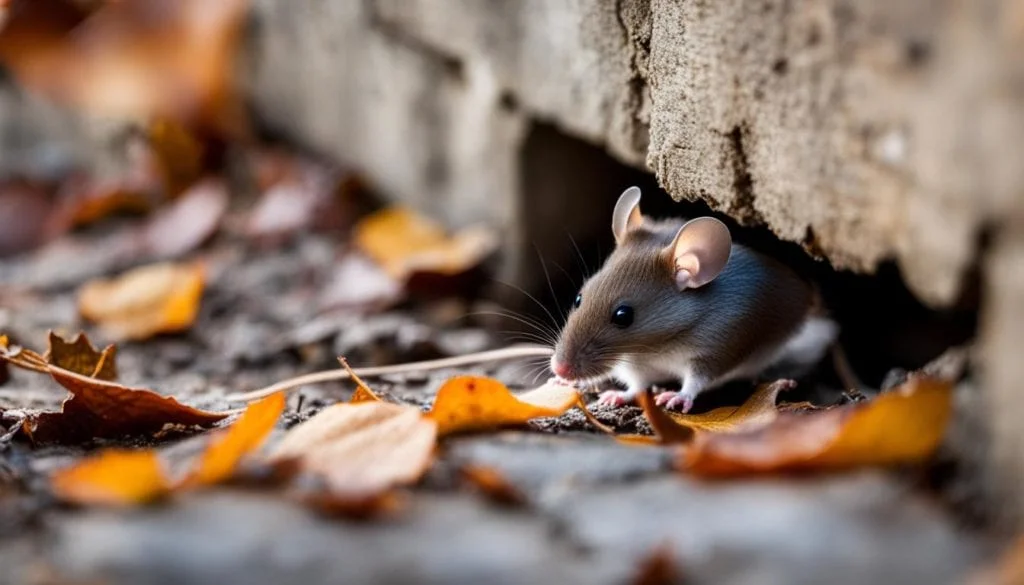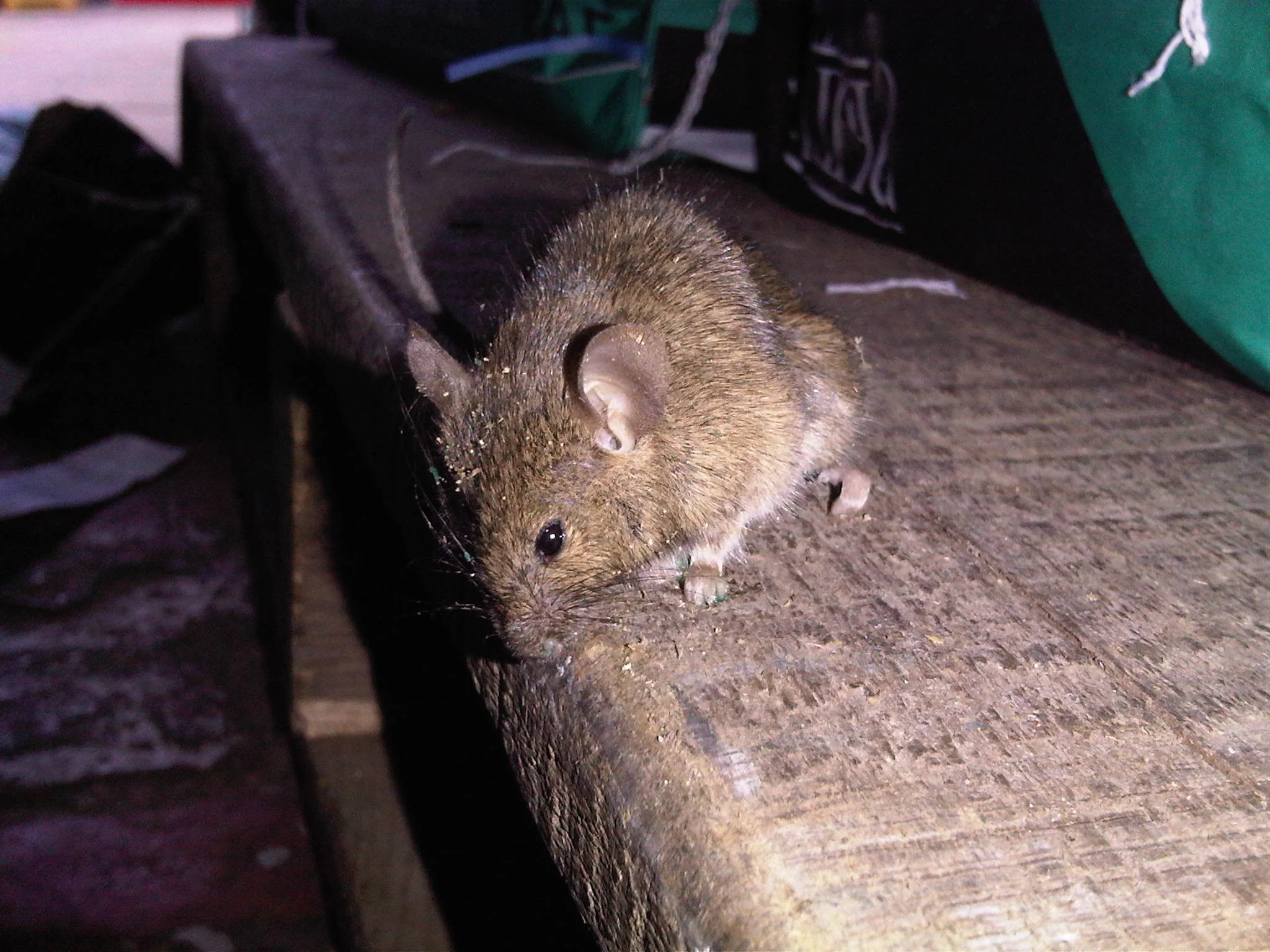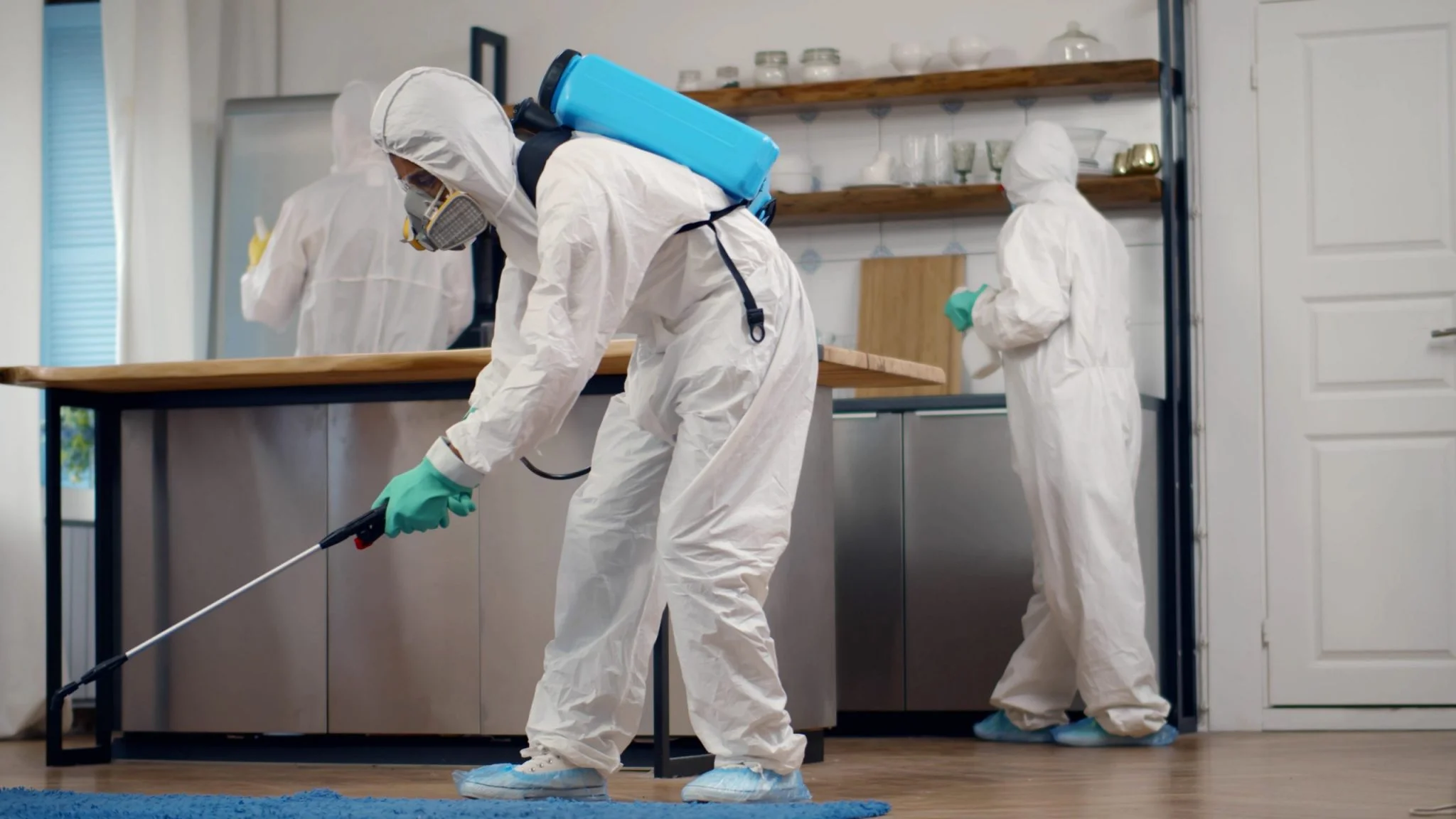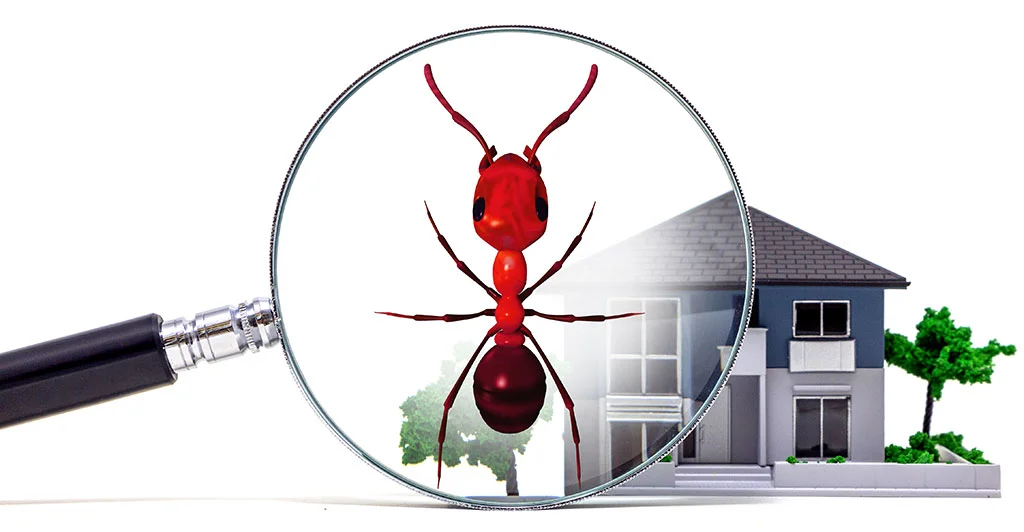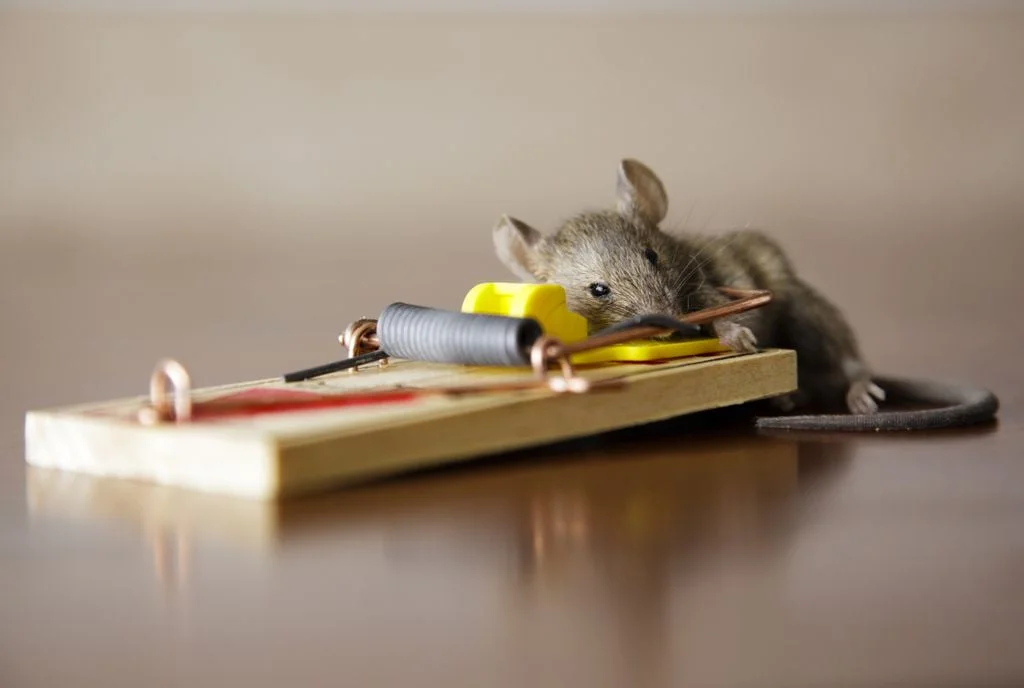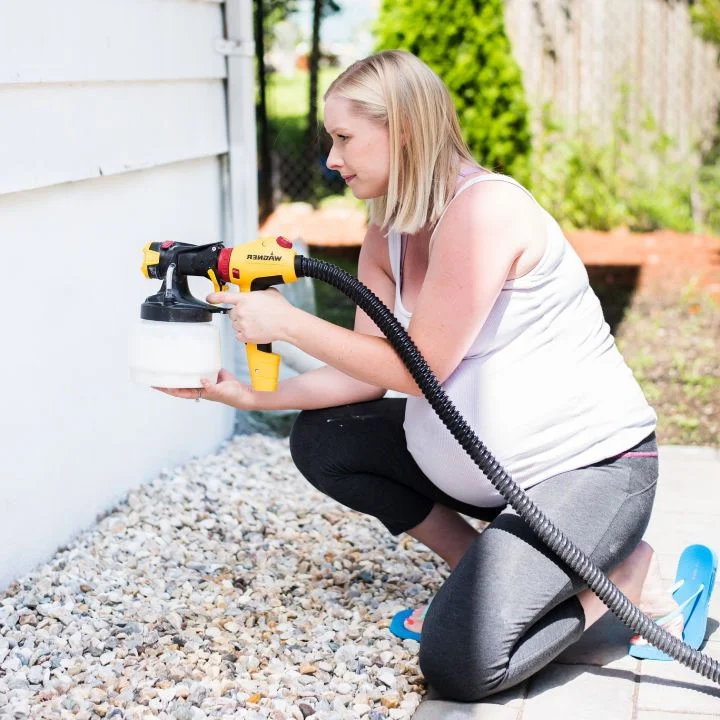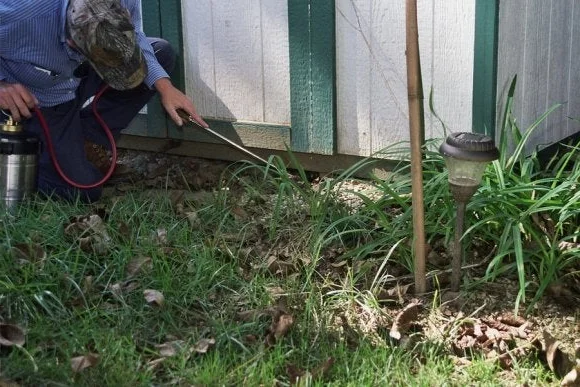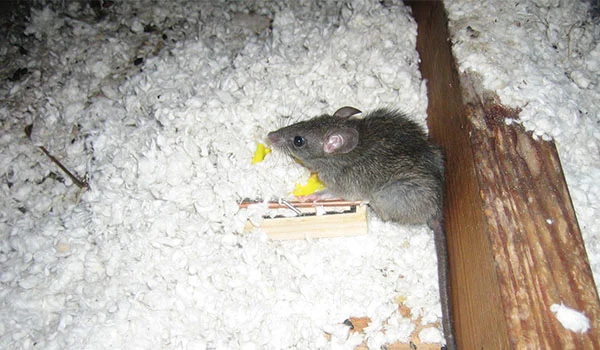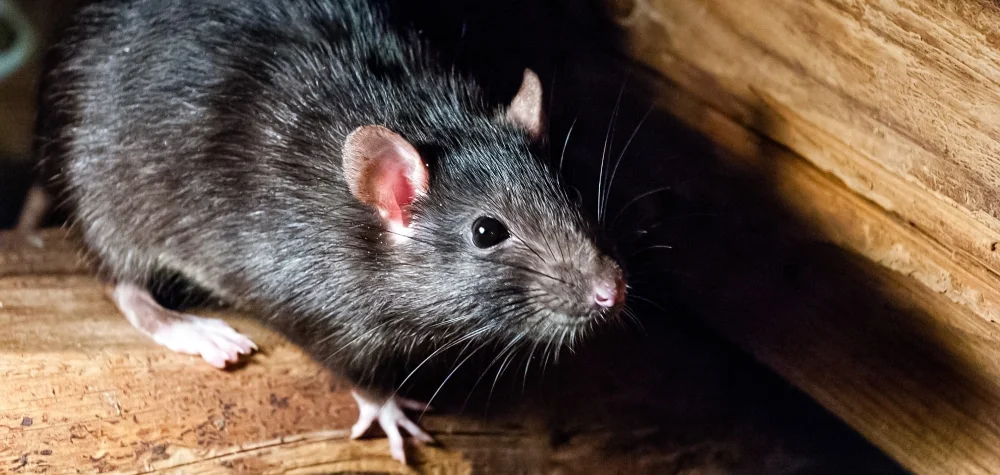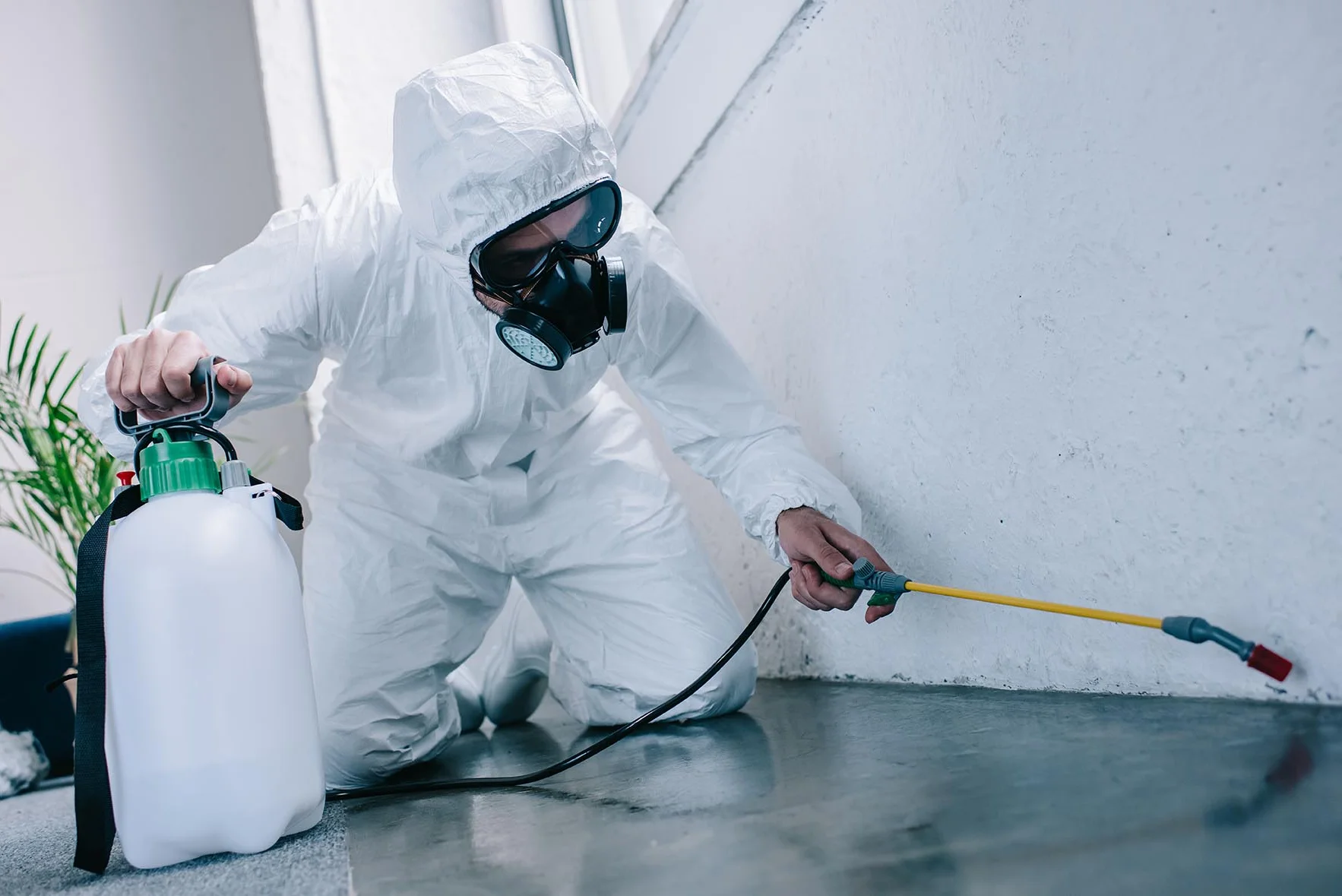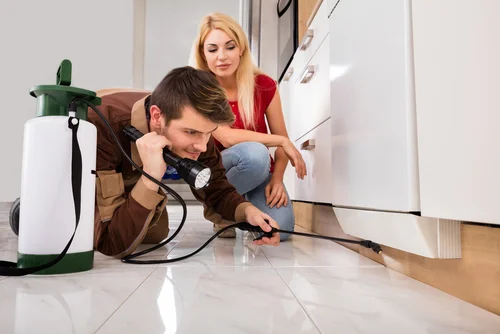The sound of tiny feet scurrying in your walls, droppings in kitchen cabinets, or chewed food packaging are telltale signs that mice have invaded your home. These small but persistent rodents can quickly transform from a minor nuisance into a major infestation, posing serious health risks and causing significant property damage. Effective mouse control requires more than just setting a few traps – it demands understanding mouse behavior, identifying entry points, and implementing comprehensive elimination strategies that address both the current population and prevent future invasions.
House mice are incredibly adaptable creatures that can squeeze through openings as small as a dime, making them particularly challenging to keep out once they've discovered your property. They reproduce rapidly, with a single pair capable of producing dozens of offspring in just a few months. Professional mice extermination services provide the expertise, tools, and proven methods necessary to eliminate existing infestations and establish long-term prevention measures that keep these unwanted guests from returning.
Hearing mice in your walls? Our expert team provides
emergency mouse control
24/7 and comprehensive
rodent elimination to protect your home and family.
Get immediate help today!
Understanding House Mice Behavior and Biology
Successfully controlling mice requires understanding their behavior patterns, preferences, and biological needs. House mice are small rodents typically measuring 3-4 inches in body length with tails of similar length. They're excellent climbers, can jump up to 12 inches, and are active primarily at night, which often means infestations go unnoticed until they become severe.
Mouse Biology and Reproduction
House mice are small but prolific breeders that can quickly establish large populations
House mice reach sexual maturity at just 6-8 weeks of age and can begin reproducing immediately. Females can have 5-10 litters per year, with each litter containing 4-8 pups. This means a single pair of mice can theoretically produce over 2,000 descendants in a single year under ideal conditions. The gestation period is only 19-21 days, allowing populations to explode rapidly when food and shelter are available.
Mice are omnivores but prefer grains, seeds, and sweet foods. They need very little water and can often obtain sufficient moisture from their food. Their small size allows them to survive on just 3-4 grams of food per day, meaning even small food sources can support substantial mouse populations. Understanding these biological factors is crucial for effective mouse prevention strategies.
Mouse Behavior Patterns
-
Territorial Behavior Mice establish territories and follow regular travel patterns along walls and baseboards. They rarely venture more than 25 feet from their nest, preferring familiar routes that offer cover and protection.
-
Nesting Preferences Mice build nests in quiet, undisturbed areas using soft materials like paper, fabric, or insulation. Common nesting sites include wall voids, attics, basements, and areas behind appliances.
-
Nocturnal Activity Mice are most active during nighttime hours, typically between dusk and dawn. Daytime sightings often indicate a large population or disturbance of their normal hiding places.
-
Neophobic Tendencies Mice are naturally suspicious of new objects in their environment, which can make them trap-shy initially. Professional techniques account for this behavior to improve capture success.
-
Social Structure While not as social as rats, mice do establish hierarchies and communicate through scent marking, vocalizations, and pheromones.
Identifying Signs of Mouse Infestation
Early detection of mouse infestations is crucial for effective control. Mice are secretive creatures that prefer to remain hidden, so recognizing the subtle signs of their presence can help you address problems before they become severe. Professional inspectors know exactly what to look for and can identify mouse activity even when the rodents themselves are rarely seen.
The most obvious signs include droppings, gnaw marks, and unusual sounds, but experienced technicians also look for less obvious indicators like grease marks, urine stains, and subtle changes in pet behavior. Understanding these signs helps homeowners know when to seek professional mouse extermination services.
Physical Evidence of Mouse Activity
-
Mouse Droppings Small, dark pellets about 1/8 to 1/4 inch long, often found along walls, in cabinets, and near food sources. Fresh droppings are dark and moist, while older ones become gray and crumbly.
-
Gnaw Marks Small tooth marks on food packaging, wood, plastic, and other materials. Mice must constantly gnaw to keep their ever-growing teeth worn down, leaving characteristic small, clean-cut marks.
-
Grease Marks Dark, oily smudges along walls and baseboards where mice regularly travel. These marks result from the oils in mouse fur transferring to surfaces during repeated contact.
-
Nesting Materials Shredded paper, fabric, or insulation found in quiet areas indicates active nesting. Mice gather soft materials from throughout the home to build comfortable nests for their young.
-
Food Damage Chewed packaging, scattered crumbs, and small holes in food containers. Mice often contaminate more food than they consume through their droppings and urine.
-
Track Marks In dusty areas, you might see small footprints or tail drag marks. Professional technicians sometimes use tracking powder to identify mouse travel routes.
Auditory and Behavioral Signs
Sounds are often the first indication that mice have entered your home. The scratching, scurrying, and squeaking noises are typically most noticeable at night when mice are most active and household sounds are minimized. These sounds often come from wall voids, attics, or areas behind appliances where mice feel safe to move about.
Changes in pet behavior can also indicate mouse presence. Cats and dogs often detect mice long before humans notice other signs, showing increased interest in specific areas, pawing at walls or baseboards, or displaying alert behavior in areas where mice are active.
Health Risks Associated with Mouse Infestations
Mice pose significant health risks that extend far beyond the annoyance of their presence. These small rodents are vectors for numerous diseases and can contaminate food, surfaces, and air quality in your home. The health concerns associated with mouse infestations make professional elimination not just a comfort issue, but a genuine health imperative for protecting your family.
The primary health risks come from direct contact with mouse droppings, urine, saliva, and nesting materials, as well as indirect exposure through contaminated food and airborne particles. Some diseases can be transmitted through bites, though mice rarely bite unless handled. Understanding these risks emphasizes why prompt, professional rodent control is essential when mice are detected.
Diseases Transmitted by Mice
-
Hantavirus Pulmonary Syndrome A potentially fatal respiratory disease transmitted through inhalation of dust contaminated with mouse droppings or urine. Early symptoms resemble flu but can rapidly progress to severe breathing difficulties.
-
Salmonellosis Food poisoning caused by Salmonella bacteria that mice carry and spread through their droppings. Symptoms include diarrhea, fever, and abdominal cramps lasting several days.
-
Lymphocytic Choriomeningitis (LCM) A viral infection that can cause neurological problems. While often mild, it can be serious in immunocompromised individuals and pregnant women.
-
Leptospirosis A bacterial infection transmitted through contact with mouse urine. Can cause kidney damage, liver failure, and other serious complications if untreated.
-
Tularemia A bacterial disease that can be transmitted through handling infected mice or breathing contaminated dust. Symptoms include fever, skin ulcers, and swollen lymph nodes.
Indirect Health Impacts
Beyond direct disease transmission, mice create additional health concerns through food contamination and allergen production. A single mouse produces 50-75 droppings per day and urinates frequently, contaminating surfaces throughout your home. This contamination makes food unsafe for consumption and can trigger allergic reactions in sensitive individuals.
Mouse allergens from urine, droppings, and dander can trigger asthma attacks and allergic reactions, particularly in children. The stress and sleep disruption caused by mouse infestations can also impact mental health and overall well-being, making professional elimination essential for restoring a healthy home environment.
Safety During Cleanup
Never vacuum or sweep mouse droppings, as this can aerosolize dangerous particles. Professional cleanup using proper protective equipment and disinfection procedures is recommended for significant infestations to minimize health risks.
Professional Mouse Control vs. DIY Methods
While hardware stores offer numerous mouse control products, there's a significant difference between catching a few mice and eliminating an entire infestation. Professional mouse control provides comprehensive solutions that address the root causes of infestations rather than just treating symptoms.
| Aspect |
Professional Treatment |
DIY Methods |
| Problem Assessment |
Comprehensive inspection identifies entry points, nesting areas, and population size for targeted treatment |
Homeowners often underestimate infestation scope and miss critical entry points and nesting sites |
| Treatment Strategy |
Multi-faceted approach combining exclusion, elimination, and prevention for long-term results |
Usually focuses only on trapping visible mice without addressing underlying causes |
| Product Effectiveness |
Professional-grade baits and traps with higher success rates and longer-lasting results |
Consumer products often less effective and may create trap-shy mice if used incorrectly |
| Entry Point Sealing |
Professional-grade exclusion materials and techniques that permanently block mouse access |
Basic materials that mice can often chew through or circumvent over time |
| Safety Considerations |
Safe handling of contaminated materials and proper disposal following health guidelines |
Risk of disease exposure during cleanup and disposal of mice and contaminated materials |
| Time to Resolution |
Faster elimination with guaranteed results and follow-up services if needed |
Often prolonged process with trial and error, potentially allowing continued reproduction |
Why DIY Mouse Control Often Fails
Most DIY mouse control attempts fail because they focus on eliminating visible mice rather than addressing the factors that allowed the infestation to develop. Mice are prolific breeders, and a few missed individuals can quickly repopulate an area. Additionally, homeowners often don't identify all entry points, allowing new mice to enter even after the current population is reduced.
Professional exterminators understand mouse behavior and biology, enabling them to predict where mice will travel, nest, and feed. They use this knowledge to place control measures strategically and implement exclusion techniques that prevent re-infestation. The result is faster, more complete elimination with lasting protection against future invasions.
Stop struggling with ineffective traps and recurring mouse problems! Our professional
mouse extermination services guarantee complete elimination –
contact us today for a comprehensive solution!
Professional Mouse Control Treatment Methods
Effective mouse control requires a systematic approach that combines multiple techniques tailored to your specific situation. Our professional technicians use proven methods that have been refined through years of experience and ongoing training in the latest rodent control technologies.
Comprehensive Property Inspection
Every successful mouse control program begins with a detailed inspection of your property. Our trained technicians examine both interior and exterior areas to identify active mouse signs, potential entry points, food sources, and environmental conditions that support mouse populations. This inspection covers areas homeowners often overlook, such as crawl spaces, attics, utility rooms, and the exterior perimeter.
During the inspection, we assess the extent of the infestation, identify mouse species (house mice vs. other rodents), and evaluate factors contributing to the problem. This thorough assessment allows us to develop a customized treatment plan that addresses your specific situation rather than applying a generic approach that may not be effective for your unique circumstances.
Strategic Trap Placement and Baiting
Professional mouse trapping involves much more than simply placing traps where droppings are found. Our technicians understand mouse behavior patterns and place traps along established travel routes, near nesting areas, and close to food sources. We use various trap types including snap traps, live traps, and multi-catch devices depending on the situation and client preferences.
Proper baiting is crucial for trapping success. We use fresh, appealing baits that mice prefer over available food sources, and we understand how to present baits in ways that overcome mice's natural suspicion of new objects. Professional-grade baits and attractants are often more effective than store-bought options and remain appealing longer.
Entry Point Exclusion
The most critical component of long-term mouse control is preventing new mice from entering your property. Our technicians identify and seal all potential entry points using professional-grade materials that mice cannot chew through. This includes gaps around pipes, cracks in foundations, openings around utilities, and spaces under doors.
We use materials like copper mesh, steel wool, expanding foam with deterrent additives, and metal flashing to create permanent barriers. Our exclusion work comes with warranties because we understand that effective sealing prevents future infestations and eliminates the need for ongoing trapping.
Monitoring and Follow-up
Professional mouse control includes ongoing monitoring to ensure complete elimination and verify that exclusion measures remain effective. We schedule follow-up visits to check traps, assess progress, and address any new signs of mouse activity. This monitoring phase is crucial because it ensures the problem is completely resolved rather than just temporarily reduced.
During follow-up visits, we also provide recommendations for maintaining a mouse-free environment, including sanitation improvements, landscape modifications, and early warning signs to watch for. Many clients choose ongoing monitoring programs that provide peace of mind and immediate response if mouse activity is detected in the future.
Common Mouse Entry Points and Prevention
Understanding how mice enter homes is crucial for effective prevention. Mice can squeeze through openings as small as 1/4 inch (about the size of a dime), making them capable of exploiting gaps that homeowners might not consider significant. Professional mouse prevention involves identifying and sealing these entry points before they become highways for rodent invasion.
Most mouse entries occur at ground level, but these agile climbers can also access upper floors through utility lines, tree branches, or exterior building features. A comprehensive prevention program addresses all potential access points and creates multiple barriers that make it extremely difficult for mice to establish residence in your home.
Primary Entry Points
-
Foundation Cracks and Gaps Small cracks in concrete foundations, gaps where utilities enter the building, and spaces around basement windows provide easy ground-level access for mice.
-
Door and Window Gaps Worn weatherstripping, gaps under doors, and spaces around window frames allow mice to enter living areas directly from the exterior.
-
Utility Penetrations Areas where pipes, cables, and utility lines enter the building often have gaps that provide convenient mouse highways into wall voids and living spaces.
-
Garage Door Seals Damaged or worn garage door seals create large openings that mice can easily exploit, giving them access to garages and potentially the main house.
-
Roof and Attic Access Gaps in roof lines, damaged roof vents, and openings where utilities reach the roof allow mice to access attic spaces and travel throughout the house.
-
HVAC System Access Unsealed ductwork, gaps around HVAC equipment, and damaged vent covers provide pathways that can distribute mice throughout the entire house.
Effective Prevention Strategies
Successful mouse prevention requires a multi-layered approach that addresses attractants, access points, and environmental conditions that support mouse populations. While some prevention measures can be implemented by homeowners, comprehensive mouse-proofing often requires professional expertise and specialized materials.
The most effective prevention programs combine exclusion techniques with habitat modification and sanitation improvements. This comprehensive approach creates an environment that is both inaccessible and unattractive to mice, providing long-term protection against infestations.
-
Food Source Elimination Store all food in sealed, mouse-proof containers, clean up crumbs and spills immediately, and secure pet food in containers with tight-fitting lids.
-
Clutter Reduction Minimize storage areas where mice can hide and nest, particularly in basements, garages, and utility rooms where boxes and stored items provide ideal nesting sites.
-
Landscaping Management Keep vegetation trimmed away from the house, remove brush piles and debris that provide cover, and maintain a clear zone around the foundation.
-
Moisture Control Fix leaky pipes, improve ventilation in humid areas, and eliminate standing water sources that attract mice and other pests.
-
Regular Maintenance Inspect and maintain weatherstripping, seal new cracks as they develop, and keep garage doors properly adjusted and sealed.
Seasonal Mouse Activity and Control Strategies
Spring (March-May)
- Mouse populations begin expanding
- Outdoor food sources become available
- Ideal time for exclusion work
Focus: Seal entry points and eliminate attractants before peak breeding season begins.
Summer (June-August)
- Peak breeding and population growth
- Mice may move outdoors temporarily
- Young mice begin exploring new territories
Focus: Monitor for new activity and maintain exclusion barriers while mice are active outdoors.
Fall (September-November)
- Mice seek warm indoor shelter
- Peak invasion season for homes
- Food hoarding behavior increases
Focus: Critical time for comprehensive mouse-proofing and aggressive control measures.
Winter (December-February)
- Indoor populations establish territories
- Reduced activity but continued reproduction
- Easiest time to locate and eliminate mice
Focus: Eliminate established populations and plan spring prevention strategies.
Addressing Mice in Attics and Wall Voids
Attics and wall voids present unique challenges for mouse control because these areas are difficult to access, provide excellent hiding places, and often contain insulation and stored items that mice use for nesting. Mice in these areas can cause significant damage to insulation, wiring, and stored belongings while remaining largely invisible to homeowners.
Professional treatment of attic and wall void infestations requires specialized equipment, safety protocols, and techniques that go beyond standard home treatments. Our technicians are trained to work safely in these confined spaces while implementing effective control measures that eliminate existing populations and prevent future invasions.
Dangers of Mice in Hidden Spaces
-
Electrical Fire Risk Mice often chew on electrical wiring, potentially creating fire hazards. Damaged insulation on wires can cause shorts, sparks, and electrical fires that pose serious safety risks.
-
Insulation Damage Mouse urine and droppings contaminate insulation, reducing its effectiveness and creating health hazards. Heavily contaminated insulation may need replacement.
-
Structural Damage Extensive gnawing can damage wooden structural elements, particularly in older homes where mice have been active for extended periods.
-
Air Quality Issues Mouse droppings and urine in HVAC systems can contaminate air circulation throughout the home, spreading allergens and potentially harmful particles to living areas.
-
Noise and Sleep Disruption Mice running in walls and attics create scratching and scurrying sounds that can disrupt sleep and cause stress for occupants, particularly when activity occurs at night.
Professional Attic Treatment Methods
Treating mice in attics requires specialized approaches that account for the unique characteristics of these spaces. Our technicians use advanced trapping techniques, targeted baiting systems, and exclusion methods designed specifically for attic environments. We also address the contamination and damage that often accompanies attic infestations.
Safety is paramount when working in attics, as these spaces often contain hazardous materials, unstable surfaces, and poor air quality. Our team uses appropriate protective equipment and follows strict safety protocols to ensure effective treatment without creating additional risks for your family or our technicians.
Commercial Mouse Control Solutions
Commercial properties face unique mouse control challenges due to larger spaces, complex building systems, regulatory requirements, and the need to minimize business disruption. Our commercial mouse control programs are designed to meet these specific needs while maintaining the highest standards of effectiveness and safety.
Mouse infestations in commercial settings can result in failed health inspections, product contamination, equipment damage, and significant business liability. Our commercial services provide comprehensive solutions that protect your business reputation, ensure regulatory compliance, and maintain a professional environment for employees and customers.
Industry-Specific Solutions
-
Food Service and Restaurants Specialized programs that meet health department requirements while ensuring continuous operation. Includes discreet treatment methods and comprehensive documentation for inspections.
-
Warehouses and Distribution Centers Large-scale monitoring systems and strategic control placement designed for high-volume storage facilities with complex logistics operations.
-
Healthcare Facilities Infection control protocols and treatments that meet medical facility standards while protecting vulnerable patients and maintaining sterile environments.
-
Manufacturing Plants Industrial-grade solutions that protect equipment and products while meeting safety and quality standards for manufacturing environments.
-
Office Buildings Professional treatments for break rooms, storage areas, and building infrastructure that maintain a comfortable work environment for employees.
-
Retail Establishments Customer-friendly approaches that protect merchandise and maintain an attractive shopping environment while effectively controlling mouse populations.
Commercial Program Benefits
Our commercial mouse control programs provide value beyond simple pest elimination. We help businesses maintain compliance with health and safety regulations, protect their reputation, and avoid the costly disruptions that can result from mouse infestations. Regular monitoring and maintenance prevent small problems from becoming major issues.
Documentation and reporting are integral parts of our commercial services, providing the records businesses need for regulatory compliance and insurance purposes. Our technicians understand the unique requirements of different industries and can adapt treatment protocols to meet specific business needs and schedules.
Emergency Mouse Control Services
Some mouse situations require immediate attention, particularly when health inspections are imminent, special events are planned, or severe infestations pose immediate health risks. Our emergency mouse control services provide rapid response when you can't wait for standard scheduling. We understand that mouse problems can escalate quickly and may threaten business operations or family safety.
Emergency situations often involve restaurants facing health inspections, homes preparing for special events, or severe infestations where large numbers of mice are visible during daytime hours. Our emergency response team carries specialized equipment and fast-acting treatments designed to provide immediate relief while implementing comprehensive long-term solutions.
When to Call for Emergency Service
-
Health Department Inspections When you have an upcoming inspection and discover mouse activity that could result in violations, fines, or temporary closure orders.
-
Severe Infestations When large numbers of mice are seen during daytime hours, indicating an overwhelming population that requires immediate professional intervention.
-
Property Damage Risks When mice are causing active damage to electrical systems, stored goods, or building infrastructure that poses safety or financial risks.
-
Special Events Home gatherings, business meetings, or other important events where mouse presence would be unacceptable and embarrassing.
-
Health Concerns When family members have compromised immune systems or when mouse contamination poses immediate health risks that require urgent attention.
Rapid Response Guarantee
Our emergency mouse control team typically responds within 2-4 hours for true emergencies. We provide immediate assessment and can often begin treatment on the same day to address urgent situations quickly and effectively.
Advanced Mouse Control Technologies
Modern mouse control has evolved significantly with the introduction of advanced technologies that provide more effective, efficient, and humane solutions. Our commitment to staying current with these innovations ensures our clients receive the most sophisticated and successful mouse control methods available in the industry.
These advanced technologies allow for more precise monitoring, targeted treatments, and comprehensive data collection that improves both immediate results and long-term prevention strategies. The integration of technology with traditional expertise creates superior outcomes for residential and commercial clients.
Smart Monitoring Systems
-
Digital Monitoring Stations Smart traps and bait stations that send real-time alerts when activated, allowing for immediate response and more efficient service scheduling.
-
Remote Surveillance Technology Wireless cameras and sensors that monitor mouse activity patterns, helping technicians understand behavior and optimize treatment placement.
-
Data Analytics Platforms Comprehensive tracking systems that analyze activity patterns, treatment effectiveness, and seasonal trends to improve prevention strategies.
-
GPS Tracking Systems Precise mapping of monitoring stations and treatment areas that ensures consistent service and helps identify high-activity zones.
Innovative Treatment Methods
Advanced treatment methods focus on precision, safety, and environmental responsibility while maintaining superior effectiveness. These innovations allow us to solve mouse problems more efficiently with minimal impact on your daily routine and the surrounding environment.
The latest treatment technologies also provide better long-term results by targeting specific aspects of mouse biology and behavior that traditional methods might miss. This scientific approach to mouse control ensures more complete elimination and longer-lasting protection.
-
Contraceptive Baits Advanced formulations that prevent reproduction rather than killing mice, providing humane population control for sensitive environments.
-
Pheromone-Based Attractants Synthetic attractants that exploit natural mouse communication chemicals to improve trap effectiveness and monitoring accuracy.
-
Ultrasonic Exclusion Devices Strategic use of ultrasonic technology in conjunction with physical barriers to create comprehensive exclusion systems.
-
Biological Control Agents Environmentally friendly options that use natural predators or pathogens to control mouse populations in appropriate settings.
What Our Clients Say About Our Mouse Control Services
"After months of trying different traps and baits with no success, we called the professionals. They identified entry points we never would have found and eliminated our mouse problem completely in just two weeks. The peace of mind is worth every penny."
- Sarah M., Homeowner
★★★★★
"Our restaurant was facing a potential shutdown due to mouse activity in the kitchen. The emergency response was incredible – they had the problem under control within hours and helped us pass our health inspection the next day."
- Carlos R., Restaurant Owner
★★★★★
"The technicians were professional, thorough, and explained everything they were doing. They didn't just eliminate the mice – they made sure they couldn't come back. We haven't had a single mouse in over a year."
- Jennifer L., Business Manager
★★★★★
Frequently Asked Questions About Mouse Control
How quickly can professional mouse control eliminate an infestation?
The timeline for mouse elimination depends on infestation size, property layout, and environmental factors. Most residential mouse problems show significant reduction within the first week, with complete elimination typically achieved within 2-4 weeks. Commercial properties or severe infestations may require additional time, but our technicians provide realistic timelines during the initial inspection and guarantee results.
Is professional mouse control safe for children and pets?
Yes, our professional treatments prioritize family and pet safety while effectively eliminating mice. We use tamper-resistant bait stations, strategic trap placement away from areas where children and pets spend time, and provide specific safety guidelines during treatment. Our technicians are trained to identify and avoid potential safety hazards while maintaining treatment effectiveness.
Why do mice keep coming back even after treatment?
Recurring mouse problems usually indicate that entry points weren't completely sealed or that attractants remain available. Professional mouse control includes comprehensive exclusion work and elimination of conditions that support mouse populations. If mice return after professional treatment, it's often due to new entry points developing or failure to address all contributing factors during the initial treatment.
How much does professional mouse control cost?
Mouse control costs vary based on property size, infestation severity, and required exclusion work. Most residential treatments range from moderate to significant investment, but the cost of professional treatment is typically much less than the potential damage mice can cause to property, stored goods, and health. We provide detailed estimates after inspection and offer various service packages to meet different budgets and needs.
What should I do if I find dead mice after treatment?
Finding dead mice is normal and indicates that treatment is working effectively. Our technicians provide detailed instructions for safe disposal using protective equipment. We also conduct follow-up visits to remove deceased mice from traps and bait stations, and to check for any mice that may have died in inaccessible areas. This monitoring ensures complete elimination and addresses any odor concerns.
Don't let mice take over your home or business! Contact our expert team for professional
mouse control services that guarantee complete elimination and long-term protection –
schedule your inspection today and reclaim your space!
Understanding the Economics of Mouse Control
Understanding the true cost of mouse infestations helps put professional control services in perspective. While some people hesitate due to upfront costs, the hidden expenses of mouse problems often far exceed the investment in professional elimination. Mice cause property damage, health risks, food contamination, and ongoing stress that have real economic and personal costs.
Professional mouse control is an investment that pays dividends through complete elimination, property protection, and peace of mind. When you consider the alternative costs of ongoing infestations, professional treatment becomes not just the most effective option, but often the most economical choice as well.
Hidden Costs of Mouse Infestations
-
Property Damage Mice cause significant damage to insulation, wiring, stored goods, and building materials. Electrical damage alone can result in costly repairs and fire risks that far exceed treatment costs.
-
Food Contamination Mice contaminate much more food than they consume, forcing homeowners to discard groceries, pantry items, and stored foods on an ongoing basis.
-
Health Care Costs Medical expenses from mouse-transmitted diseases, allergic reactions, and stress-related health issues can be substantial and long-lasting.
-
Ineffective DIY Attempts Multiple trips to hardware stores, various trap types, baits, and sealants add up quickly while often providing only temporary relief.
-
Business Disruption For commercial properties, mouse problems can result in failed inspections, temporary closures, customer complaints, and lost revenue that far exceeds treatment costs.
-
Sleep and Stress The psychological impact of ongoing mouse problems affects quality of life, sleep, and family comfort in ways that are difficult to quantify but very real.
Long-term Value
Professional mouse control typically includes warranties and follow-up services that ensure complete elimination. This protection means you won't pay repeatedly for the same problem, making professional treatment more cost-effective than initial comparisons might suggest.

